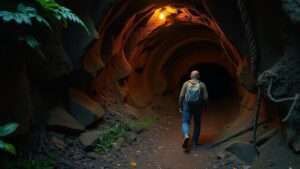How explorers piece together fragmented artifacts to reconstruct ancient narratives.
How Explorers Piece Together Fragmented Artifacts to Reconstruct Ancient Narratives
The field of archaeology often resembles a vast jigsaw puzzle, where explorers and researchers strive to assemble fragmented artifacts into coherent narratives of ancient civilizations. Each small piece, whether a shard of pottery or a remnant of a tool, holds clues about the lives of people long gone. This article delves into the methodologies employed by archaeologists, the significance of these artifacts, and the implications for our understanding of history.
Understanding Fragmented Artifacts
Fragmented artifacts are remnants of past societies that have been partially preserved through time. e pieces can vary significantly in form and function, including:
- Pottery shards
- Stone tools
- Architectural remains
- Bone fragments
Each artifact serves as a historical puzzle piece, offering insights into the technology, economy, and culture of its respective era. For example, in the case of ancient Mesopotamia, the discovery of cuneiform writing on clay tablets has been pivotal in understanding the administrative and literary practices of one of the world’s earliest civilizations.
Methods of Reconstruction
Archaeologists use a variety of methods to piece together these artifacts. Below are some of the key techniques utilized in this intricate process:
- Field Excavation: Systematic digging at specific sites to unearth artifacts in context.
- Cataloging and Analysis: Each artifact is documented, photographed, and analyzed for materials and design.
- Comparative Studies: Artifacts are compared with similar finds from other sites to identify cultural or temporal links.
- Technological Analysis: Techniques such as radiocarbon dating and DNA analysis can provide age and origin insights.
For example, in Pompeii, the meticulous excavation of the site has allowed researchers to reconstruct the daily lives of its inhabitants. layering of volcanic ash preserved buildings, artworks, and household items, offering direct evidence of Roman life in the first century AD.
The Role of Technology in Artifact Reconstruction
In recent years, technological advancements have significantly enhanced the ability to analyze and reconstruct artifacts. Techniques such as:
- 3D Printing: Helps in recreating artifacts that are too fragile to display.
- CT Scanning: Non-invasively reveals hidden structures within objects.
- Digital Mapping: Creates comprehensive visual records of excavation sites.
These technologies have allowed for more accurate reconstructions. For example, researchers have employed laser scanning to digitally recreate the intricate hieroglyphics found in tombs, which can then be analyzed without the risk of damaging the original material.
Case Studies of Successful Reconstructions
A classical example of successful artifact reconstruction is the intricacies of the Minoan civilization. Excavations at Knossos, Crete, conducted by Sir Arthur Evans in the early 1900s, uncovered frescoes, pottery, and intricate architectural layouts. The fragmented artifacts, including the famous Prince of the Lilies fresco, have helped historians understand the artistic and social landscape of this Bronze Age culture, dated approximately 1500-1400 BC.
Another significant example can be found in the excavation of the Viking settlement at LAnse aux Meadows in Newfoundland, Canada. Discovered in the 1960s, the site revealed artifacts such as iron nails and a bronze cloak pin, which, when pieced together, provided evidence of Norse exploration in North America around the year 1000 AD.
Impacts of Reconstruction on Historical Narratives
The reconstruction of ancient narratives through fragmented artifacts offers profound implications for our understanding of human history. By piecing together these remnants, archaeologists are able to:
- Challenge existing historical narratives and assumptions.
- Uncover the socio-political dynamics of ancient societies.
- Highlight connections between disparate cultures and migrations.
For example, the discoveries in the Indus Valley Civilization, such as urban planning and drainage systems, challenge the notion that advanced societal structures were exclusive to Mesopotamia and Egypt. These findings highlight that complex societies emerged independently in various parts of the world.
Conclusion: The Ongoing Journey of Discovery
The journey of reconstructing ancient narratives from fragmented artifacts is one of continual discovery and revelation. As technologies evolve and methodologies improve, our understanding of ancient civilizations becomes more nuanced and detailed. Each artifact, no matter how small, contributes to a broader tapestry that informs us about our collective past.
For those interested in exploring this field, consider becoming involved in local archaeological projects or supporting museums that aim to preserve and interpret these valuable clues from history. Through these efforts, not only do we keep history alive, but we also continue to explore the complexities of our shared human experience.



